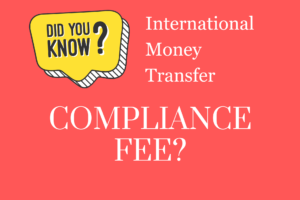If you are struggling financially, you might have heard the term “bankruptcy”. But is this the right way for you? Those looking for financial relief through bankruptcy should carefully consider their financial situation, analyze nuances like Chapter 11 bankruptcy vs Chapter 13 or Chapter 7, and study the pros, cons, and alternatives to this option. In this guide, we will help you understand bankruptcy and make a more informed decision.
What Is Bankruptcy?
Bankruptcy is a legal process that helps people and corporations handle overwhelming debt. It lets debtors reduce or repay their obligations under bankruptcy court supervision. The Bankruptcy Code is a system that has several chapters, each geared to distinct financial problems and goals.
Chapters 7, 11, and 13 are most regularly filed. Let’s take a closer look at each of them:
- Liquidation bankruptcy, or Chapter 7, includes selling debtor assets to pay creditors. This option is for low-income people who cannot repay their obligations.
- Chapter 11 bankruptcy, designated for organizations and certain people with large debts and assets, reorganizes debts and assets to function while paying creditors.
- Chapter 13 bankruptcy, sometimes called a wage earner’s plan, lets regular income earners repay their debts over three to five years.
Anyone considering bankruptcy must understand the differences and processes of each kind. It takes careful study, typically with a legal professional’s help, to traverse each chapter and choose the best course of action for the debtor’s individual financial situation.
Figuring Out Where You Stand Financially
The first thing you need to do is take a good, hard look at your finances. How much money do you owe, and how does it stack up against what you earn and own?
Sometimes, you might find that you’re just going through a rough patch. Maybe you’ve hit a bump because of an unexpected bill or a temporary loss of income. In cases like these, there are roads you can take that don’t lead straight to bankruptcy.
You could consolidate all your debts into one with a lower interest rate, talk to your creditors to see if they can ease up on the terms, or get on a debt management plan. These routes can help you get back on your feet without the lasting mark of bankruptcy on your credit history.
But when does the situation become more concerning? Here’s how you know it might be time to seriously consider bankruptcy as a way out:
- Drowning in Debt: If you can’t pay off your obligations and loans in the near future, it’s a sign to consider bankruptcy. This is especially true if you owe more than you can repay in a decade.
- Foreclosure Nears: Bankruptcy might delay foreclosure if you can’t pay your mortgage.
- Wage Garnishment: Lenders removing a portion of your income immediately indicates a poor financial position. Bankruptcy can stop wage garnishments, which lets you use your whole income for living expenses again.
- Debt Cycle: If you keep borrowing to pay off existing loans, your financial system needs a reset. Bankrupting can be the way to go.

The Pros and Cons of Filing for Bankruptcy
Deciding to file for bankruptcy is a significant step, one that comes with its own set of benefits and drawbacks. It’s like deciding to reset your financial life; while it can offer a fresh start, it also has its challenges.
Pros
- Debt Relief: The most immediate relief bankruptcy offers is the discharge of debts. This means that many of your debts could be wiped clean, freeing you from the burden of overwhelming bills and collection calls.
- Automatic Stay: As soon as you file, an automatic stay goes into effect, which stops most creditors from pursuing debt collection, foreclosures, evictions, and wage garnishments.
- Financial Education: The process includes mandatory credit counseling and debtor education courses, designed to help you manage your finances better in the future.
Cons
- Impact on Credit: Bankruptcy hits your credit score hard. It stays on your credit report for 7–10 years, affecting your ability to get loans and credit cards and sometimes even impacting job opportunities.
- Loss of Property: Depending on the type of bankruptcy filed, you may have to surrender some of your assets to pay off creditors.
- Public Record: Your bankruptcy filing becomes a matter of public record, which can be a concern for those worried about their privacy.
- Not All Debts are Covered: Some debts, like student loans, child support, and certain taxes, typically aren’t discharged in bankruptcy.
Looking Beyond Bankruptcy: Other Ways to Tame Your Finances
If the cons outweigh the pros in your situation, there are other lifelines that could pull you to safety. Here’s a glimpse at some paths you might consider:
- Debt Management Plans: Picture gathering all your debts and lumping them into one big pot. A credit counseling agency can help you do just that, turning a mountain of bills into a single monthly payment.
- Debt Settlement: Your creditors may agree to reduce the amount of money you owe after some negotiation. Although it might impact your credit score, it’s a way to lessen the load without filing for bankruptcy.
- Loan Modification: You can negotiate with your lender to adjust your interest rate or extend the loan period, reducing the monthly payments to something more manageable.
Getting Ready for Bankruptcy: Steps to Take
If bankruptcy still seems like the best or only choice, there are some important steps to prepare yourself for this significant financial decision:
- Credit Counseling: You’ll need to complete a credit counseling session. This isn’t just a hoop to jump through; it’s a chance to get a clear-eyed view of your financial situation and confirm that bankruptcy is the right path for you.
- Gathering Financial Documents: Start compiling all your financial records—debts, income, assets, and monthly expenses. This paperwork will show you and the court the full scope of your financial landscape.
- Getting a Bankruptcy Attorney: A bankruptcy attorney can help you understand the complexities of your case and advocate for your best interests throughout the process.
- Credit Counseling Course: Finally, you’ll need to take a debtor education course after filing. Think of it as your roadmap to a healthier financial future, equipping you with the tools to manage your finances and avoid future pitfalls.
Final Considerations
Keeping finances in good shape is a difficult task, and many people find themselves in difficult situations with serious debts and loans. There are numerous ways to deal with such issues. Bankruptcy is one of the most serious decisions you can make for your financial future.
When analyzing your financial situation, keep our guides in mind and try to find opportunities to get a professional consultation. Sometimes there are solutions that may not seem obvious. And if bankrupting is your best option, make sure you learn all the nuances of this process.
—
This page was last updated on February 21, 2024.
–




